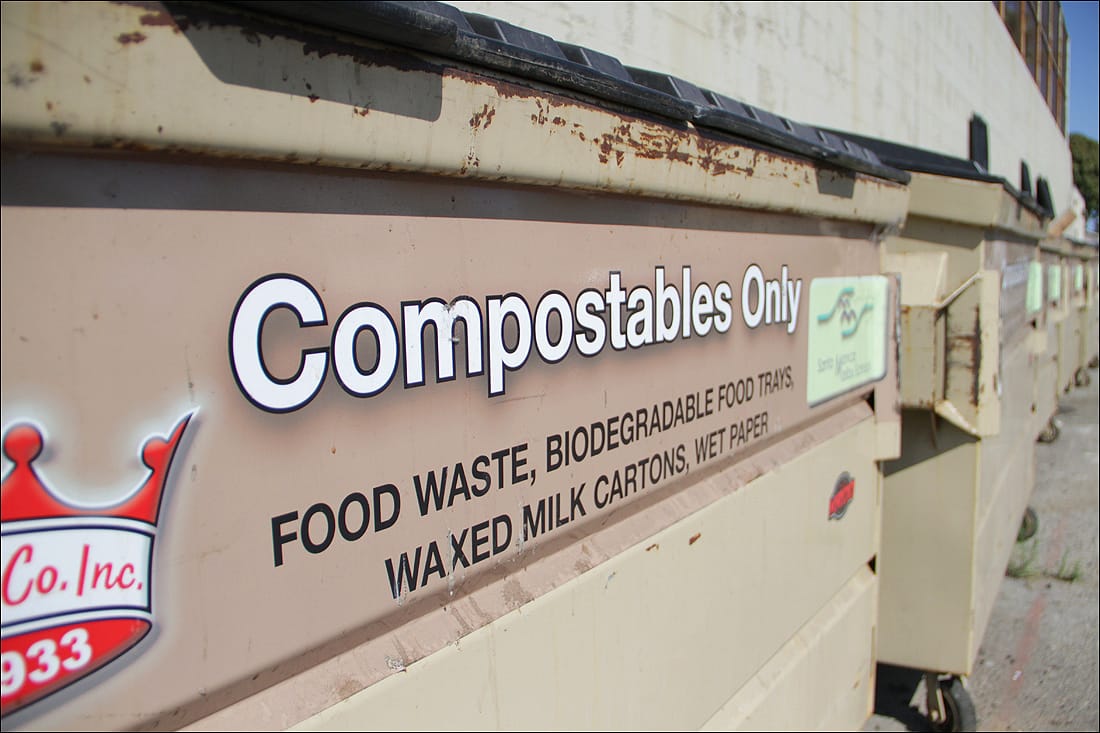
SAMOHI — The Samohi Solar Alliance is used to taking on big projects in an attempt to improve the environment at Santa Monica High School.
The group, an eco-conscious band of students, successfully lobbied to install a new solar hot water heater to heat Drake Pool in one of its first projects, and two of its leaders received a presidential commendation last year for their work encouraging district students of all ages to get on bikes or take public transportation to school.
This year, they're planning to take on something even more insidious, an environmental problem less obvious than driving and more complicated than flipping a switch — the trash.
The Samohi Solar Alliance aims to turn its high school into a zero-waste campus, meaning that little to no materials carted away from the school would end up in a landfill.
That may seem like a monumental task given that it strikes at the core of not only what types of materials the district buys and eventually tosses, but what kids bring from home that ends up in trash bins.
It also means breaking through the confusion of what can be recycled and what is better directed to one of an earth-tone rainbow of other cans, be it the green waste disposal or a compost bin.
"Lots of kids are unsure about what kinds of plastics you can recycle," said Claire Goldberg, the assistant president of the alliance who will enter her sophomore year this fall.
She's a member of a four-person team that will lead the club next year, along with seniors Julian Mickelson, Amanda Bang and Noah Rosenberg.
To get to the point of influencing others to deal with their trash more efficiently, Goldberg and others in the club had to learn what the waste landscape at Samohi already looks like.
For that, they turned to Virginia Hyatt.
Hyatt runs purchasing for the Santa Monica-Malibu Unified School District, but she's in charge of what leaves the campus as well as what goes in.
"Part of my other job title is that I coordinate all sustainability efforts with the district," Hyatt said.
She works hand-in-hand with the Solar Alliance on its various projects, giving them the guidance they need to turn their vision into a workable reality.
When they came to her with the idea of making Samohi zero waste, Hyatt directed them to Crown Disposal.
Crown Disposal provides waste services to cities like Beverly Hills, Calabasas, Santa Paula and San Fernando, but Hyatt chose to contract with them because they take a unique approach to waste management.
As in, they waste practically nothing.
The company separates all of the materials that come into the facility, going so far as to pick apart the plastic trash bags for reuse. They recycle construction waste, run huge organic composting hills and power houses from the energy produced by their biofuel.
"They're an amazing company," Hyatt said.
And when the teens approached Crown Disposal to find out what they would have to do to turn Samohi a slightly deeper shade of green, what they learned surprised them.
"We're pretty much zero waste," said Charlotte Biren, the out-going president of the Solar Alliance.
Crown Disposal already manages to recycle, compost and otherwise reuse 90 percent of the waste coming out of Samohi, a rate that technically qualifies as zero waste.
But the trash audit that proved it also revealed a number of areas in which the Samohi campus could improve how it deals with the stuff it throws away.
"By doing the audit, it showed that we're throwing out a lot of white paper into brown bins and not separating it out like bottles and cans," Hyatt said. "We get paid a little bit of money if we separate them out."
Although some of the rules seem pretty cut and dry — plastic bottles, soda cans and other metal in one pile, paper in another — recycling has gray areas.
What if your bottle of juice still has a little residue in it, or that pizza box someone snuck onto the health-conscious campus is practically see-through with grease?
Those are the kinds of issues that the Solar Alliance hopes to tackle through improved signage, events and education focused on letting people know what products go where.
Goldberg learned about the importance of environmental education when she went to an international conference in Rio de Janeiro. She spoke to people from the United States who have teachers that do not believe in climate change, and watched a resident set fire to a piece of plastic despite the toxic smoke it produced.
The experience convinced her that education has to start younger to prevent bad habits from forming, creating a positive impact on the natural world.
Once the alliance tackles where trash should go, Hyatt hopes that students will begin to question why they are producing garbage at all.
"We have all this trash," she said. "What can you do to reduce all of that even more?"
ashley@www.smdp.com

